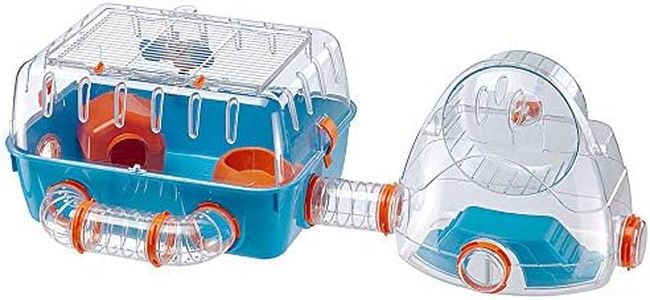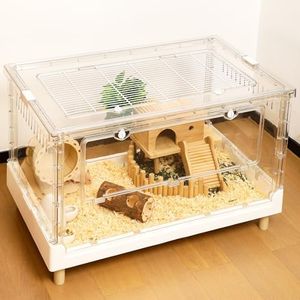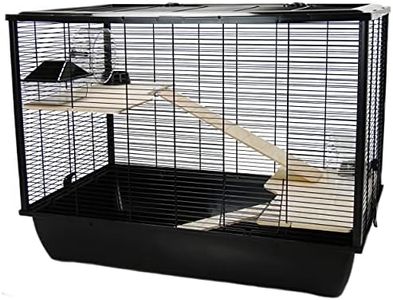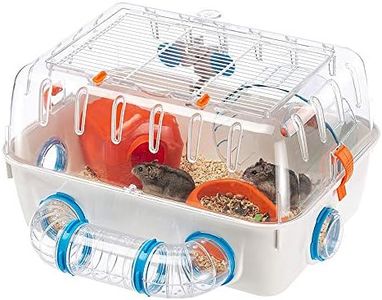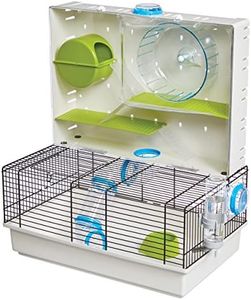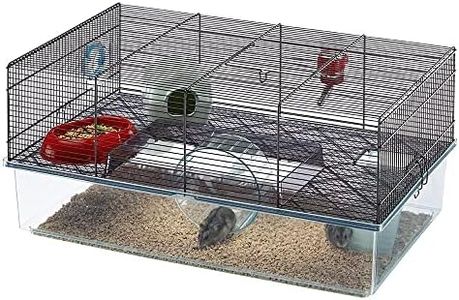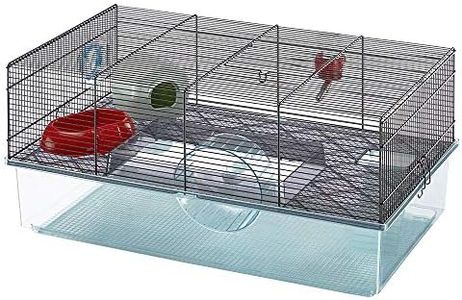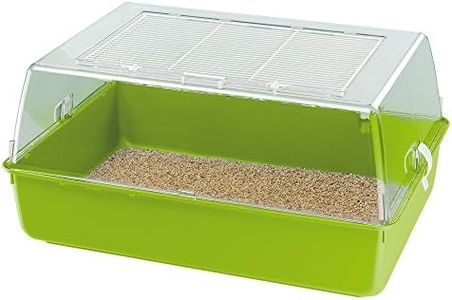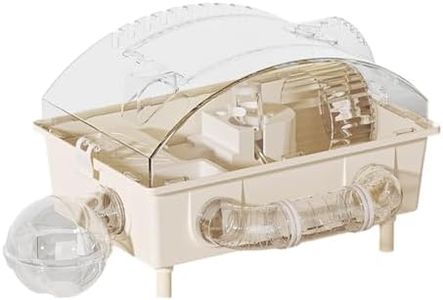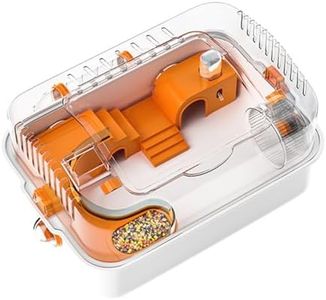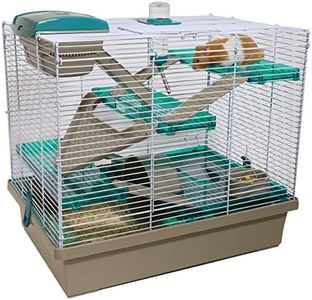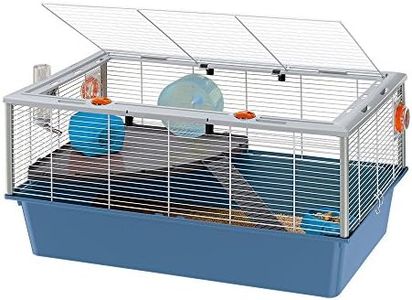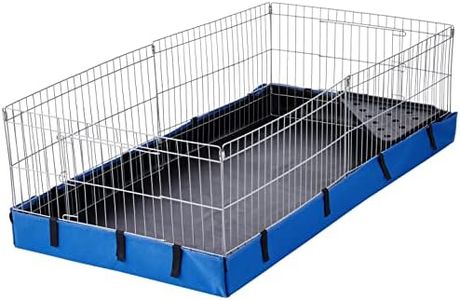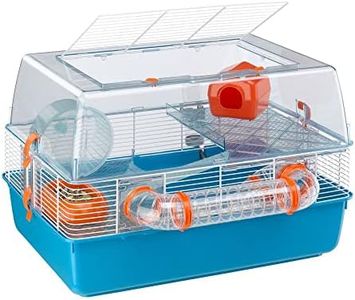We Use CookiesWe use cookies to enhance the security, performance,
functionality and for analytical and promotional activities. By continuing to browse this site you
are agreeing to our privacy policy
10 Best Hamster Cages
From leading brands and best sellers available on the web.Buying Guide for the Best Hamster Cages
Choosing a suitable hamster cage is one of the most important decisions for your pet’s health and happiness. The right cage provides a safe, comfortable, and stimulating environment. When shopping, focus on the space, structure, and features that will allow your hamster to move freely, stay safe, and remain entertained. Remember, hamsters are active and curious creatures, so prioritizing their welfare will lead to a healthier, happier pet.Cage SizeCage size refers to the total floor area and dimensions available for your hamster to explore and exercise. This is crucial because hamsters need enough space to move around, burrow, and play. Cages are typically divided into small, medium, and large sizes. Small cages are portable but can feel cramped, which may lead to stress or boredom for your hamster. Medium cages offer a basic amount of space, but large cages provide ample room, which is ideal for more natural behaviors and accessory placement. To pick the right size, consider how much room your hamster needs (larger is almost always better) and the available space in your home.
Bar SpacingBar spacing is the distance between the bars of the cage. This is important because bars that are too far apart can allow hamsters, especially smaller species, to escape or get stuck. Bar spacing is usually categorized as narrow (about 0.25 inches or less), medium (0.3–0.4 inches), and wide (over 0.5 inches). Syrian hamsters can handle slightly wider spacing, whereas dwarf hamsters need narrower bars. Choose a bar spacing based on your hamster’s size—remember, smaller species and young hamsters require tighter bar spacing for safety.
VentilationVentilation refers to how well air can circulate inside the cage. Good ventilation prevents the buildup of odors, moisture, and harmful gases, which can impact your hamster’s health. Wire cages and cages with mesh tops offer excellent airflow, while plastic or glass cages may have reduced ventilation if not designed properly. When picking a cage, consider if it has plenty of openings or a mesh top to ensure fresh air; this is especially important if the cage body is mostly plastic or glass.
Ease of CleaningEase of cleaning means how simple it is to routinely clean and change bedding inside the cage. Cleanliness helps prevent illness and odor. Some cages have detachable bases, large doors, or features that make cleaning easier, while others require the whole cage to be dismantled. When comparing cages, look for ones with wide doors or sections that can be removed, as this will save time and hassle during regular cleanings.
Security and DurabilitySecurity refers to how well the cage keeps your hamster safe and prevents escapes, while durability is about how long the cage will last under normal use. A secure cage has sturdy locks, strong bars or walls, and no weak points that a hamster could chew through or squeeze past. Durable cages are made from materials like metal, thick plastic, or glass. Consider your hamster’s tendency to chew or escape, and pick a cage built from strong materials with a solid locking door.
Accessories and ExpandabilityAccessories are the built-in or included features like tunnels, wheels, platforms, and hideouts. Expandability means the option to connect more modules or add-ons for more space or enrichment. Some cages come as basic setups, while others have lots of features or the potential to expand. Think about how active or playful your hamster is, and whether you might want to customize or enlarge your hamster’s habitat over time. Pick a cage that can be enriched with tunnels, toys, and accessories as needed.
Substrate DepthSubstrate depth refers to how much bedding can fit in the bottom of the cage for burrowing and digging. Hamsters naturally burrow, so a cage that allows a good layer of bedding lets them express this natural behavior. Shallow bases limit this, while deeper bases or tanks allow several inches of bedding. If your hamster is a burrower or if you want to encourage natural digging, pick a cage with a deep base or tank bottom.
